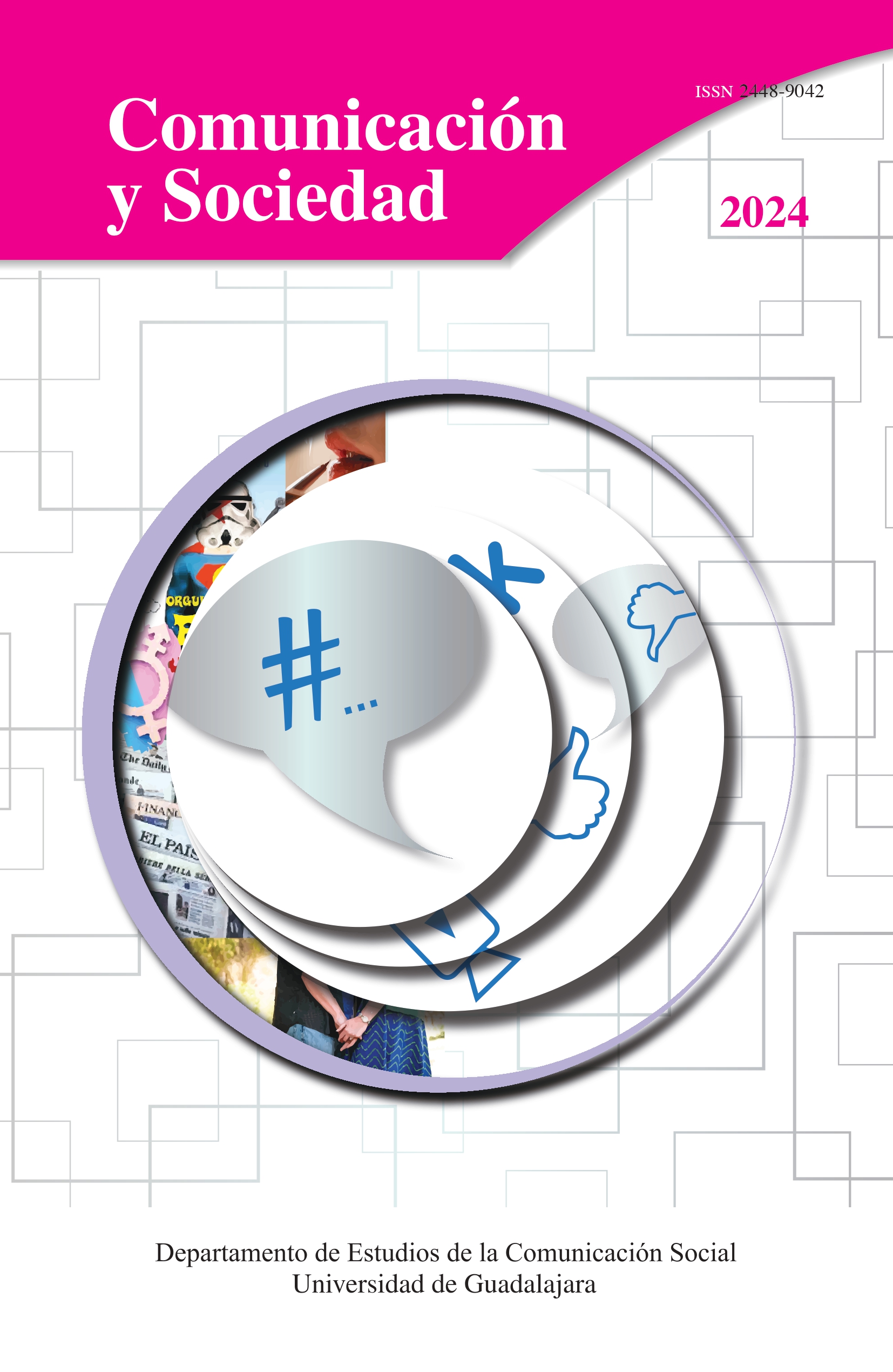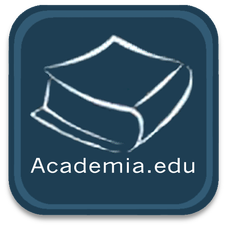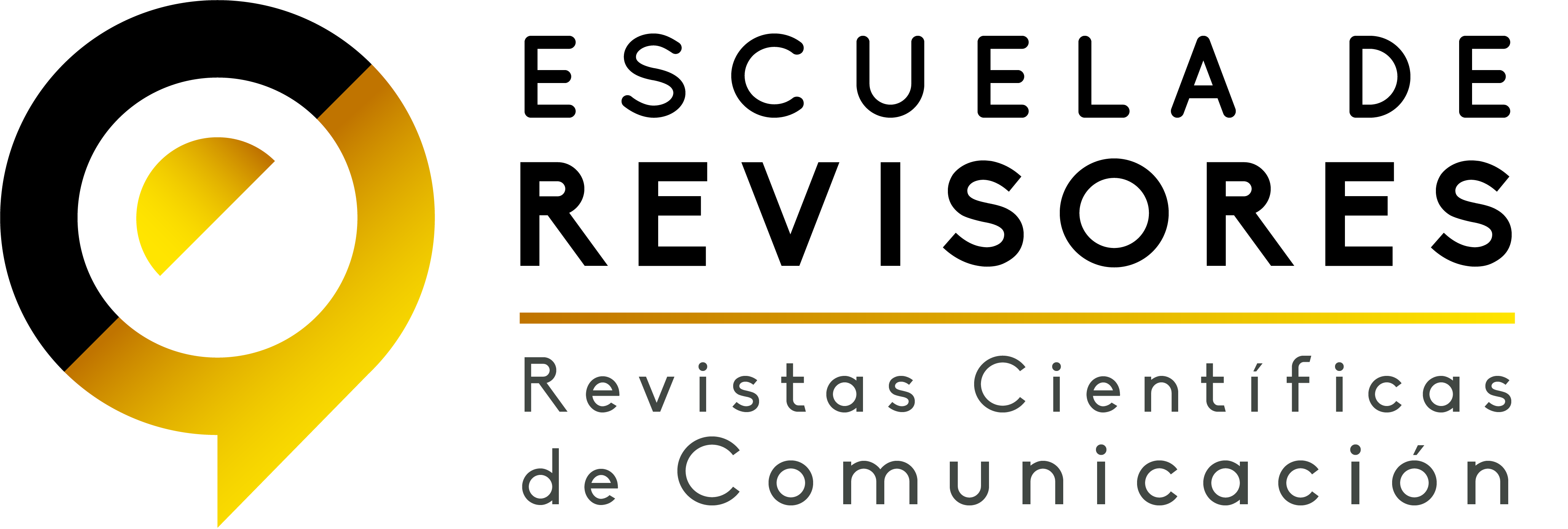¿Callejón sin salida?: El problema muestral en el estudio de las redes sociales digitales
DOI:
https://doi.org/10.32870/cys.v2024.8580Palabras clave:
Comunicación digital, Redes sociales, Metodología de investigación, Tamaño de la muestraResumen
Los objetivos de este trabajo son profundizar en la problemática muestral en el estudio de las redes sociales digitales y mostrar las posibilidades y soluciones que aporta la literatura para hacer frente a este problema. A través de una metodología teórico-reflexiva se indaga sobre el tema, destacando y analizando las opciones procedimentales utilizadas en la literatura. Se plantean, además, algunas mejoras metodológicas que pueden contribuir al desarrollo de investigaciones más fiables sobre la temática.Descargas
Citas
Beltrán-Pellicer, P., Giacomone, M. B. & Navarro, M. B. (2018). Online educational videos according to specific didactics: The case of Mathematics. Culture and Education, 30(4), 633-662. https://doi.org/10.1080/11356405.2018.1524651
Brooks, H., Devereux-Fitzgerald, A., Richmond, L., Bee, P., Lovell, K., Caton, N., Cherry, M. G., Edwards, B. M., Downs, J., Bush, L., Vassilev, I. & Young, B. (2022). Assessing the effectiveness of social network interventions for adults with a diagnosis of mental health problems: a systematic review and narrative synthesis of impact. Social Psychiatry and Psychiatric Epidemiology, 57(5), 907-925. https://doi.org/10.1007/s00127-022-02242-w
Buitrago, A. & Torres-Ortiz, L. (2022). Influencers de ciencia en Twitch. Divulgación científica a través de vídeo-streaming en tiempos de COVID-19. Teknokultura, 19(2), 165-176. https://doi.org/10.5209/tekn.77941
Burgos, M., Beltrán-Pellicer, P. & Godino, J. D. (2020). La cuestión de la idoneidad de los vídeos educativos de matemáticas. Revista Española de Pedagogía, 78(275), 27-50. https://doi.org/10.22550/rep78-1-2020-07
Del Sol Fabregat, L. A., Tejeda Castañeda, E. & Mirabal Díaz, J. M. (2017). Los métodos teóricos: una necesidad de conocimiento en la investigación científico-pedagógica. Edumecentro, 9(4), 250-253. https://revedumecentro.sld.cu/index.php/edumc/article/view/934
De Souza, S. T. & Costa, P. H. (2021). Educommunicative culture and new narrative creations. The use of video and storytelling language in an educative context. Indagatio Didactica, 13(3), 215-232. https://doi.org/10.34624/id.v13i3.25539
Dos Santos Galvão, N. M. (2019). The YouTube as a study tool for the sufficiency test in accounting. Revista EDaPECI, 19(2), 76-84. https://periodicos.ufs.br/edapeci/article/view/10738
Eslen-Ziya, H. (2022). Humour and sarcasm: expressions of global warming on Twitter. Humanities and Social Sciences Communications, 9(1), 1-8. https://doi.org/10.1057/s41599-022-01236-y
Faciroli, J., Freguglia, R. D. S., Sirqueira, T. F. M., Vieira, M. D. T. (2022). Social networks effects on outcomes of government programs: a systematic review. Brazilian Journal of Political Economy, 42(1), 222-243. https://doi.org/10.1590/0101-31572022-3056
Feijoo Fernández, B. & Fernández-Gómez, E. (2021). Niños y niñas influyentes en YouTube e Instagram: contenidos y presencia de marcas durante el confinamiento. Cuadernos.info, (49), 300-328. https://doi.org/10.7764/cdi.49.27309
Fernández, V. F., Suárez, M. Á. S. & Machas, R. C. (2021). Communication in museums through social media during the pandemic: unveiling new opportunities for interaction. Fonseca, Journal of Communication, 23, 129-149. https://doi.org/10.14201/fjc202123129149
Fernández-Peña, R., Orvalle-Perandones, M. A., Marqués-Sánchez, P., Ortego-Maté, C. & Serrano-Fuentes, N. (2022). The use of social network analysis in social support and care: a systematic scoping review protocol. Systematic Reviews, 11(1), 1-6. https://doi.org/10.1186/s13643-021-01876-2
Flores-Márquez, D. & González Reyes, R. (2021). En busca de coordenadas metodológicas para estudiar la cultura digital. En D. Flores-Márquez & R. González Reyes (Coords.), La imaginación metodológica. Coordenadas, rutas y apuestas para el estudio de la cultura digital (pp. 15-23). Tintable.
Hassan, F. & Behadili, S. F. (2022). Modeling Social Networks using Data Mining Approaches-Review. Iraqi Journal of Science, 63(3), 1313-1338. https://doi.org/10.24996/ijs.2022.63.3.35
Hernández-Leal, E. J., Duque-Méndez, N. D. & Moreno-Cadavid, J. (2017). Big Data: una exploración de investigaciones, tecnologías y casos de aplicación. TecnoLógicas, 20(39), 15-38. https://doi.org/10.22430/22565337.685
Jones, R., Chik, A. & Hafner, C. (Eds.). (2015). Discourse Analysis and Digital Practices. Routledge.
Kemp, S. (2022). Digital 2022 Global Overview Report. https://bit.ly/3OVJRYP
Kumar, N., Oles, W., Howell, B., Janmohamed, K., Lee, S. T., Funaro, M. C., O’Connor, P. G. & Alexander, M. (2021). The role of social network support in treatment outcomes for medication for opioid use disorder: A systematic review. Journal of Substance Abuse Treatment, 127, 1-9. https://doi.org/10.1016/j.jsat.2021.108367
López, L., Maza-Córdoba, J. & Tusa, F. (2020). Educar en el contexto digital: el reto de ser edutuber. Revista Ibérica de Sistemas e Tecnologias de Informação, (E25), 188-200. https://bit.ly/3qnyHBS
Mahmoudi, A., Yaakub, M. R. & Abu Bakar, A. (2018). A new method to discretize time to identify the milestones of online social networks. Social Network Analysis and Mining, 8(1), 1-20. https://doi.org/10.1007/s13278-018-0511-4
Mahmoudi, A., Yaakub, M. R. & Abu Bakar, A. (2020). A new real-time link prediction method based on user community changes in online social networks. The Computer Journal, 63(3), 448-459. https://doi.org/10.1093/comjnl/bxz050
Marcelo, C. & Marcelo, P. (2021). Educational influencers on Twitter. Analysis of hashtags and relationship structure. Comunicar, 68, 73-83. https://doi.org/10.3916/C68-2021-06
Martorell, C. & Serra Folch, C. (2018). La presencia de las ONG en Instagram: estudio de caso de Proactiva Open Arms. Trípodos, 43, 83-97. http://hdl.handle.net/20.500.12328/1363
Moreira Queiroga, T. & Spyer Dulci, T. M. (2019). “Teachers youtubers”: Analysis of three channels of YouTube dedicated to the teaching of History. Escritas do Tempo, 1(1), 4-29. https://doi.org/10.47694/issn.2674-7758.v1.i1.2019.0429
Mucha-Hospinal, L. F., Chamorro-Mejía, R., Oseda-Lazo, M. E. & Alania-Contreras, R. D. (2021). Evaluación de procedimientos empleados para determinar la población y muestra en trabajos de investigación de posgrado. Desafíos, 12(1), 44-51. https://doi.org/10.37711/desafios.2021.12.1.253
Ojeda-Serna, V. & García-Ruiz, R. (2022). Divulgación científica en YouTube en Latinoamérica. Estudio de Casos de universidades, museos y YouTubers. Revista Eureka sobre Enseñanza y Divulgación de las Ciencias, 19(2), 2204-2204. https://doi.org/10.25267/rev_eureka_ensen_divulg_cienc.2022.v19.i2.2204
Osman, W., Mohamed, F., Elhassan, M. & Shoufan, A. (2022). Is YouTube a reliable source of health-related information? A systematic review. BMC Medical Education, 22(1), 1-12. https://doi.org/10.1186/s12909-022-03446-z
Pattier, D. (2021). The gender gap among EduTubers and the factors significantly influencing it. Journal of New Approaches in Educational Research, 10(2), 313-329. https://doi.org/10.7821/naer.2021.7.732
Phua, J., Jin, S. V. & Kim, J. J. (2016). Gratifications of Using Facebook, Twitter, Instagram, or Snapchat to Follow Brands: The Moderating Effect of Social Comparison, Trust, Tie Strength, and Network Homophily on. Telematics and Informatics, 34(1), 412-424. https://doi.org/10.1016/j.tele.2016.06.004
Pihlaja, S. (2022). Data sampling and digital discourse. En C. Vásquez (Ed.), Research methods for digital discourse analysis (pp. 55-71). Bloomsbury Publishing.
Piña-García, C. A., Gershenson, C. & Siqueiros-García, J. M. (2016). Towards a standard sampling methodology on online social networks: collecting global trends on Twitter. Applied Network Science, 1(3), 1-19. https://doi.org/10.1007/s41109-016-0004-1
Prochnow, T. & Patterson, M. S. (2022). Assessing Social Network Influences on Adult Physical Activity Using Social Network Analysis: A Systematic Review. American Journal of Health Promotion, 36(3), 537-558. https://doi.org/10.1177/08901171211060701
Rocheva, A., Varshaver, E. & Ivanova, N. (2022). Targeting on Social Networking Sites as Sampling Strategy for Online Migrant Surveys: The Challenge of Biases and Search for Possible Solutions. En S. Pötzschke & S. Rinken (Eds.), Migration Research in a Digitized World. IMISCOE Research Series, Springer, Cham. https://doi.org/10.1007/978-3-031-01319-5_3
Saurabh, S. & Gautam, S. (2019). Modelling and statistical analysis of YouTube’s educational videos: A channel Owner’s perspective. Computers & Education, 128, 145-158. https://doi.org/10.1016/j.compedu.2018.09.003
Sirisala, N., Yarava, A., Reddy, Y. P. & Poola, V. (2022). A novel trust recommendation model in online social networks using soft computing methods. Concurrency and Computation: Practice and Experience, 34(22), e7153. https://doi.org/10.1002/cpe.7153
Tindall, D., McLevey, J., Koop‐Monteiro, Y. & Graham, A. (2022). Big data, computational social science, and other recent innovations in social network analysis. Canadian Review of Sociology/Revue Canadienne de Sociologie, 59(2), 271-288. https://doi.org/10.1111/cars.12377
Tobón Berrio, L. E., Sabatier, C., Palacio Sañudo, J. E. & Navarro, O. (2021). The social representation of the rights of children: legality built by fathers and mothers. Revista Colombiana de Sociología, 44(2), 243-265. https://doi.org/10.15446/rcs.v44n2.87666
Vásquez, C. (Ed.). (2022). Research methods for digital discourse analysis. Bloomsbury Publishing.
Vatrapu, R., Mukkamala, R. R., Hussain, A. & Flesch, B. (2016). Social set analysis: A set theoretical approach to big data analytics. IEEE Access, 4, 2542-2571. https://doi.org/10.1109/access.2016.2559584
Vizcaíno-Verdú, A. & Contreras Pulido, P. (2019). From the classroom to the universal online school: Thematic dimensions on YouTube channels. HAMUT’AY, 6(3), 12-25. http://dx.doi.org/10.21503/hamu.v6i3.1841
Wang, C., Tianqing, Z., Xiong, P., Ren, W. & Choo, K. K. R. (2022). A privacy preservation method for multiple-source unstructured data in online social networks. Computers & Security, 113, 102574. https://doi.org/10.1016/j.cose.2021.102574
Zaragoza, J. C. & Roca Marín, D. (2020). El movimiento youtuber en la divulgación científica española. Revista Prisma Social, (31), 212-238. https://revistaprismasocial.es/article/view/3942
Zhang, C., Sun, J., Zhu, X. & Fang, Y. (2010). Privacy and security for online social networks: challenges and opportunities. IEEE Network, 24(4), 13-18. https://doi.org/10.1109/mnet.2010.5510913
Descargas
Publicado
Cómo citar
Número
Sección
Licencia

Esta obra está bajo una licencia internacional Creative Commons Atribución-NoComercial 4.0.
Los autores/as que publiquen en esta revista aceptan las siguientes condiciones:
De acuerdo con la legislación de derechos de autor, los autores conservan los derechos de autoría y otorgan a Comunicación y Sociedad el derecho de primera comunicación pública de la obra. Comunicación y Sociedad no realiza cargos a los autores por enviar y procesar artículos para su publicación.
Los autores/as pueden realizar otros acuerdos contractuales independientes y adicionales para la distribución no exclusiva de la versión del artículo publicado en Comunicación y Sociedad (por ejemplo incluirlo en un repositorio institucional o publicarlo en un libro) siempre que indiquen claramente que el trabajo se publicó por primera vez en Comunicación y Sociedad.


























